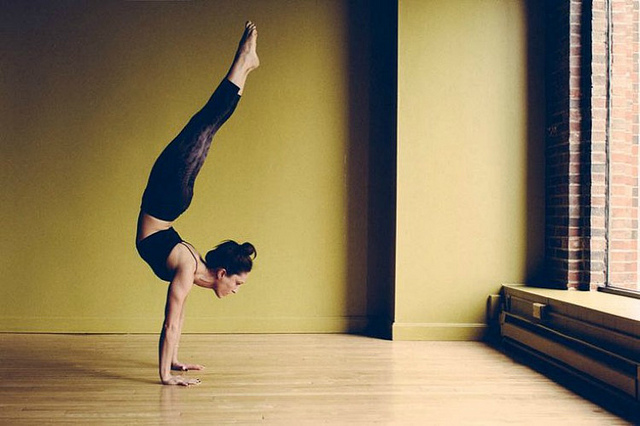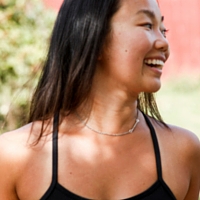
Yoga teachers, do you spend a lot of time planning for your classes?
Do you write down your sequences and jot down bullet points of cues, spiritual tidbits, stories you want to share, and more?
If you answered, yes, but you’re starting to feel a little burnt out by the routine, what if you got really curious and dropped all of that extra work the next time you teach? Does that terrify you?
If so, why?
Consider this. Are you willing to drop your fears of the unknown for the sake of your students who want you to see them over the script in your head?
When we step outside of our comfort zone and stand up to our fears, we can accelerate our learning and growth as teachers, and as human beings. We can transcend another layer of, “But what if I fail?” and come through on the other side with, “Oh, but what if today I fly?”
Is there such thing as failure in teaching? If we come away from an experience and class didn’t go “as planned,” that just means our story didn’t play out the way we envisioned. But who says this is a bad thing? Why does this make us feel so wrong? And more pragmatically, how can anything go as planned when it hasn’t happened yet?
I remember during my first yoga teacher training, I planned a whole script of words I could teach. I rehearsed the sequence and words multiple times in my head on my way to the studio, and I’ll shamelessly admit, even envisioned the feedback I would receive from my teachers! Ha. What a shock to my ego when I got there, I was chosen to teach a completely different part of the sequence and had nothing to go off of but presence!
I had to teach from what I saw in front of me, and even though I was thrown off and slightly more nervous, I learned a whole lot more than I would have had I just recited my script.
I stumbled a bit more on my words, but I also laughed at myself, and that put me on a brighter path than being stuck in the shadows of my mind. I removed the blinders from my comfort zone and found so much beauty by simply opening my eyes!
Instead of scripting your class in advance, trust what you practice on your mat. Use all of those learnings of mindfulness you practice on your mat when you stand up in front of your students!
Ground your feet to ground yourself as a teacher. Focus your eyes on individuals and the room as a whole. Pay attention to what you see, and speak to the information coming in through your eyes. Talk to your students by listening to what their bodies are telling you.
When you give a cue, pause see if they understood you, and then speak again based on what would be most helpful next. Listen to their breath! Does it sound relaxed and focused, or is it choppy and harsh? Take a breath, open your ears and help them.
Your mind has enough of your attention throughout the day so for the time you’re with your students, be with them! After all, isn’t that why you show up?
Mindfulness is key. It doesn’t guarantee that every single moment will be comfortable. Presence is interspersed with moments of discomfort and coloured with bouts of sensation because as long as we’re alive, we’re never the same from one moment to the next. But these are the exact tones that make our life more vibrant and remind us that the unknown holds powerful modes of connection.
Nowadays when I teach, I don’t script my words in advance. I would rather take a mindful pause while I’m teaching to stop and look around at what my students need, and take a chance with words I’ve never used but are completely relevant to what’s happening in front of me. This creates immediate connection that is so much more beautiful than anything I could’ve ever planned.
Yes, this is a more vulnerable, raw, less familiar path, but the more we practice stepping outside of our comfort zone, the sooner it starts to feel like a dance.
~
Author: Ayami Yamamichi
Images: Flickr/Barry Silver ; Flickr/teri_jane
Editor: Erin Lawson






Read 0 comments and reply